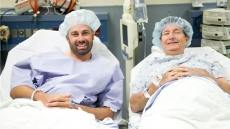A team of Indian American researchers has developed a user-friendly resource to make the powerful gene-editing tool more friendly.
The breakthrough has the potential to facilitate new discoveries in gene therapies and basic genetics research.
The gene-editing technique called CRISPR/Cas9 has been widely adopted to make precise, targeted changes in DNA.
The team describes an approach to simplify a labourious part of the gene editing process using the CRISPR/Cas9 system by choosing the best components to match specific gene targets.
"We have taken a step towards making the CRISPR/Cas9 system more robust," said Prashant Mali, assistant professor (UC) Jacobs School of Engineering.
CRISPR/Cas9 is a relatively new genome engineering tool that can target a particular segment of DNA in living cells -- such as a gene mutation -- and replace it with a genetic sequence.
It has two components - a short "guide RNA" with a sequence matching a particular gene target, and a large protein called Cas9 that cuts DNA precisely at that target.
"We built a computational model that accounts for all these different features. The end product is an interactive software for users to find guide RNAs that are predicted to be highly specific and highly active for their gene targets," said Raj Chari, research fellow from the department of genetics at the Harvard Medical School.
This technology ultimately has applications in gene therapies for genetic disorders such as sickle cell anaemia and cystic fibrosis, said the paper published in the journal Nature Methods.
"We hope to minimise the time and work in finding the most successful guide RNA sequence for a gene target, which will be helpful in finding new gene therapies," Chari said.
The team believe this will be a useful resource for the community towards designing improved genome engineering experiments.





